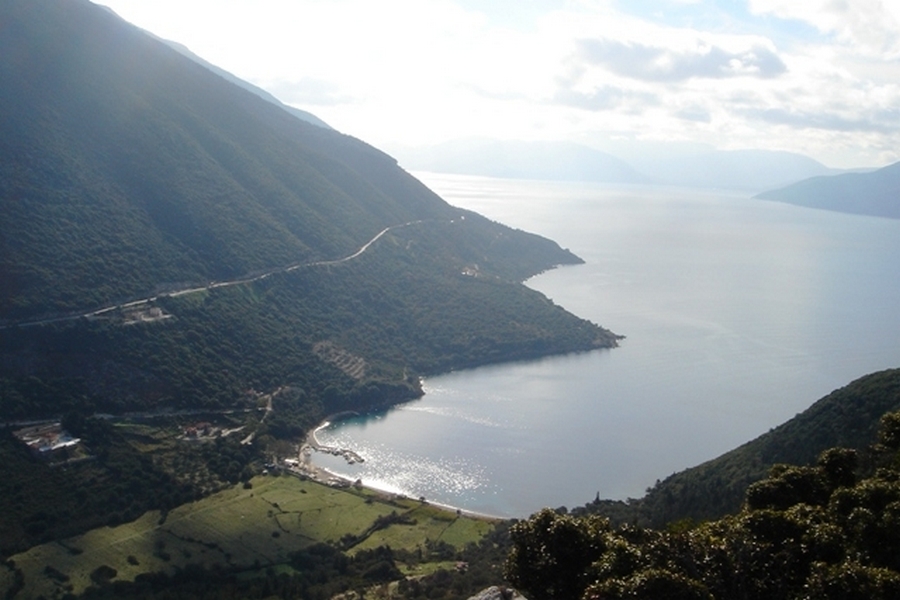Exogi - Roussano - Tris Langades - Polis Bay or Stavros
Written by Ithacorama Portal on 29.05.2013
Length: 4.500 m
Difficulty level: medium
Proposed hours: afternoon
Going from Exogi to Stavros, before the first houses of the village a wide path (old street) begins at the left of the main street. Walk on it, after some footsteps you will find a fork. Take the right street, to Stavros. At the beginning the street is horizontal, after becomes a descent, and than becomes a cobblestone pavement which via a short gorge with trees goes to the asphalt road Stavros-Exogi. Walk on the asphalt road going right, and after three corners you will find the wooden sign with the letter “C”. This is a well-defined track which in the past enabled the residents of Exogi to reach their properties at Roussano Mountain. Follow the yellow marks and enjoy the view of the majestic Afales bay and the northern Ithacan valley.
The path ends at the small plateau of Roussano. At your left hand you will see a vineyard. From there, the right hand track takes you directly to the western side of plateau, where you can enjoy the view of Cephalonia and the open sea. The left hand track takes you to the eastern side of plateau, to the rock where a castle (look-out tower) once stood.
Going west, you walk around the Roussano, with beautiful view of Cephalonia. The path goes south, then takes a corner, and continues downhill, until to the old street from Kalivia village to Polis Bay. This area is called Tris Langades. If you walk left, you will arrive to Stavros. Walk right, downhill, to the Polis Bay. At the area above the path, at 1930-1939 the British Archaeological School found a Mycenaean village (1400-1300 b.C.) and excavated three houses from this period. The old path ends at the bewitching bay of Polis. Before you arrive at the sea, walk right, and you will find the Polis Cave. Today, the roof of the cave has fallen down, and you will see only the wall of the cave. This cave, for 1.000 years, was a worship place to the gods for all Greece. Here, seamen from ships which went from Athens or Corinth to West Mediterranean Sea gave oblations to the gods. The excavations at 1930-1939 gave many finds: the Corinthian plate (800 b.C.) with the ancient symbols, Attic urns (500 b.C.), parts of 12 exceptional tripods (800 b.C.), and the famed EYXHN ODYCCEI (“Wish to Odysseus”), a fragment from terracotta from 300 b.C. You can see all them at the Archaeological Museum at Stavros.
Alternately, from the eastern edge of Roussano plateau, you can take a path which goes directly to Kalivia village. This path is shorter than the other, and at some parts slippery. At the outskirts of Kalivia you will find a fork. The left street goes to Stavros. The right street goes to Polis Bay.
-
 Click to open image!
Click to open image!
Click to open image!
Click to open image!
-
 Click to open image!
Click to open image!
Click to open image!
Click to open image!
-
 Click to open image!
Click to open image!
Click to open image!
Click to open image!
https://ithacorama.com/en/what-to-do/trekking/item/775-exogi-roussano-tris-langades-polis-bay-or-stavros#sigProGalleria06a061c490
- Source: Ithaki Trekking


